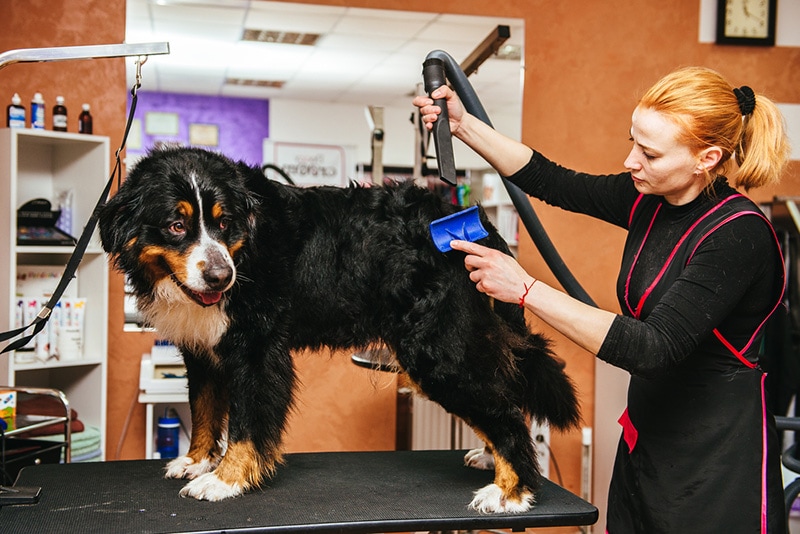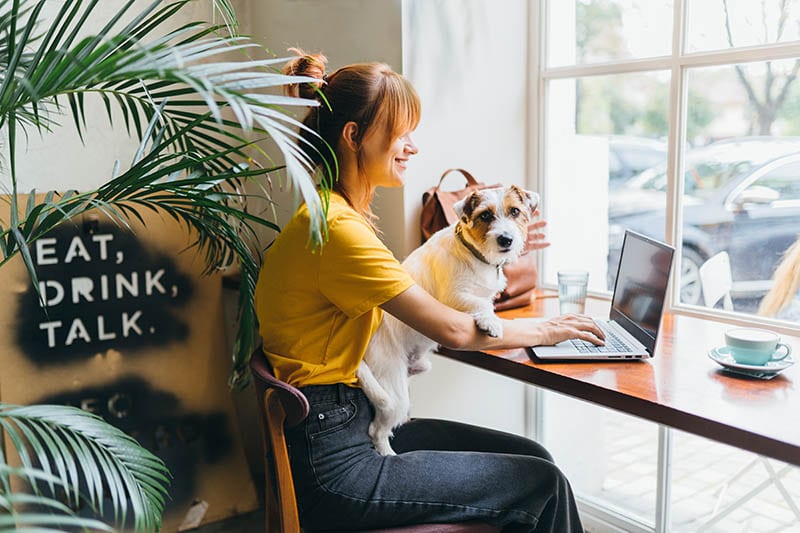How to Crate Train a Cavalier King Charles Spaniel – 11 Tips that Work!

Updated on
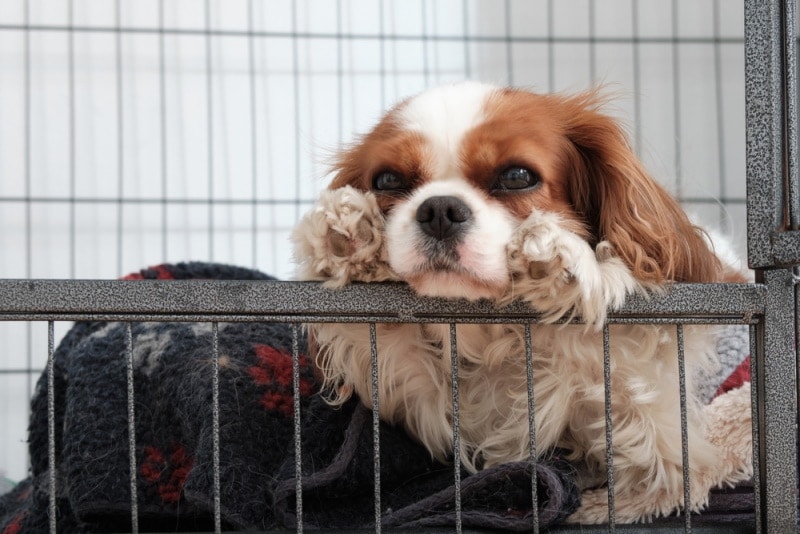
Cavalier King Charles Spaniels are remarkable dogs. They are gentle souls who are willing to please and generally pick up new things well. This eager breed is all about doing right by their owners, so crate training them would seem simple. And it is if you approach it the right way and build the correct, positive association needed.
This article will go through 11 great tips on how to crate train your Cavalier King Charles Spaniel, so they can have their own space in the home that they can retreat to when needed, helping them feel secure, safe, and content.
How to Crate Train a Cavalier King Charles Spaniel
1. Set Your Goals
As with any training session, you should set your goals before you start. Whether you’re beginning crate training with a puppy or an adult Cavalier King Charles Spaniel, knowing your expectations before starting will make it much easier.
If your Cavalier is a puppy, crate training may be slightly more manageable due to their adaptability and enthusiasm. However, if your Cavalier King Charles Spaniel is an adult, it may take a lot of work to get crate training off the ground. This is particularly true if they have negative associations with a crate.
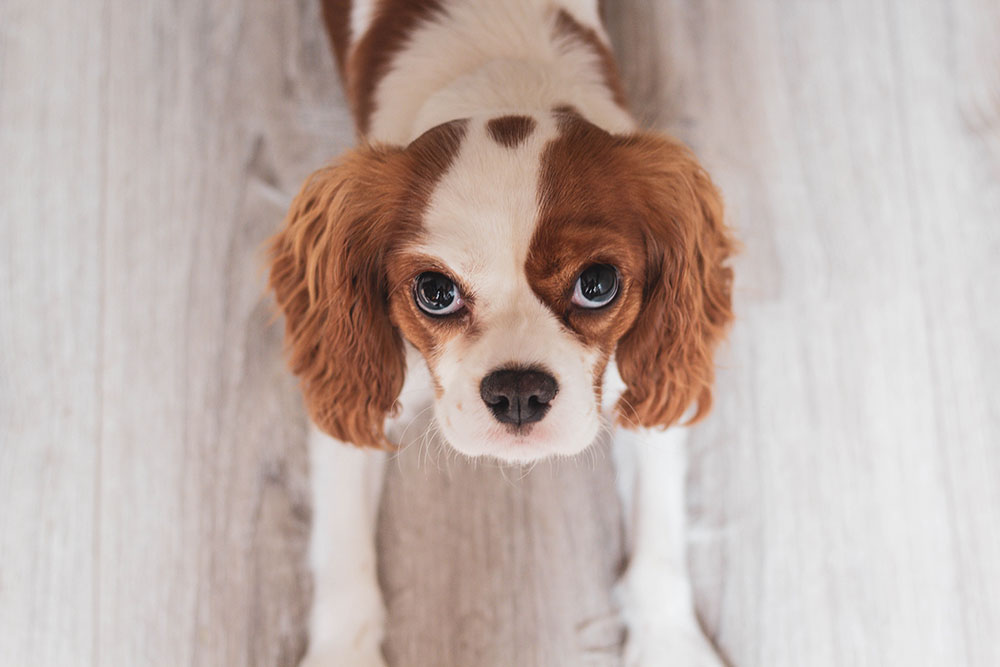
2. Select the Correct Size and Type of Crate
Because Cavalier King Charles Spaniels are definitely “people” dogs, getting the most comfortable crate for them can help to lessen any potential separation anxiety. Generally, crates should be 6 inches taller than your dog at standing height and 6 inches longer than their length.
These measurements also ensure that the crate isn’t too large, as larger crates can seem intimidating and won’t always provide the close “den-like” security a smaller crate can 1. For a puppy, crates with dividers that come in an appropriate size can be removed as your puppy grows, meaning only one type needs to be purchased.
Type Of Crate
As for the type, most owners seemingly like to go for collapsible metal crates. These are easy to clean, carry, and store, and they won’t be damaged by chewing. However, if your Cavalier King Charles Spaniel likes to chew, be cautious that they don’t get their teeth and jaws stuck on the bars.
These bare metal crates can be covered with fabric covers for privacy and security or left plain. If a more economical choice is wanted, fabric crates can also be a great option as they’re portable and easily cleaned but not usually suitable for dogs that chew.
Plastic crates are also an option but are generally less durable than metal bar crates.
3. Purchase Furnishings and Treats
Once you have your rate, consider using a blanket, bed, or other furnishings inside to make it comfortable for your cavalier King Charles Spaniel. Tasty treats and a few favorite toys can also be scattered around the crate for a fun treasure hunt and positive reinforcement.
Your dog will usually let you know if they like the furnishings; some dogs will snooze and snuggle in the crate right away, while others will drag bedding out as they prefer the crate floor!

4. Introduce Your Cavalier King Charles Spaniel to The Crate
This tip is more aimed at puppy Cavaliers but can be applied to adults too. If your Cavalier King Charles Spaniel has had no prior experience with a crate, opening the doors wide and placing treats and toys inside can be an excellent motivator for them to go in and explore.
The same can work with adult dogs, but you should use a gentle approach and never try to push your dog inside the crate or shout if they decide to back out. Instead, let them explore at their own pace; being gentle and encouraging is much more likely to motivate them to go into the crate than anger or insistence.
5. Give a Treat and Lots of Attention When They Go Inside the Crate
Once your Cavalier is inside the crate, reward your pup. Let them know how well they’re doing with a treat and lots of praise; building these positive associations is the key to helping your Cavalier King Charles Spaniel enjoy their crate and getting them fully crate-trained. Don’t close the door yet; keep praising them and show them that the crate is a fun place to be that’s entirely theirs.
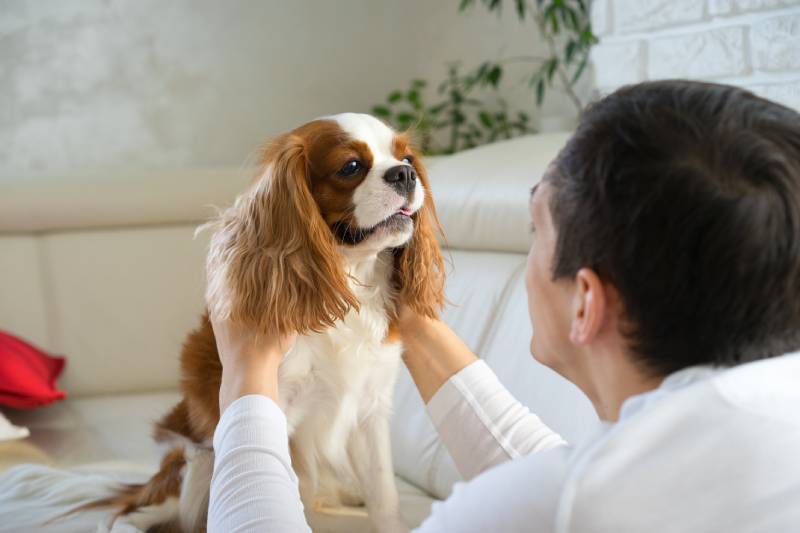
6. Always Allow Them Back Out
At this stage, closing the gate of the crate and walking away is one of the worst things you can do when training. Your Cavalier King Charles Spaniel is just starting to become relaxed enough to begin exploring; the last thing you want to do is ruin that by keeping them from getting out.
7. Playtime and Dinner Time in the Crate
If your Cavalier seems comfortable going in and out of the crate looking for treats, consider giving them dinner inside the container. Placing their food and water bowl inside the crate at dinner time can help your Cavalier King Charles Spaniel feel even more secure and happy to be there.
Once your Cavalier is happily eating inside their crate, closing the door briefly while they’re eating, then opening it when they’ve finished, is an excellent way to introduce the entrance to the training.
Playing games with toys inside the crate is another way to help your Cavalier feel at ease inside, as all of their favorite things are now happening in this one quiet, warm space.
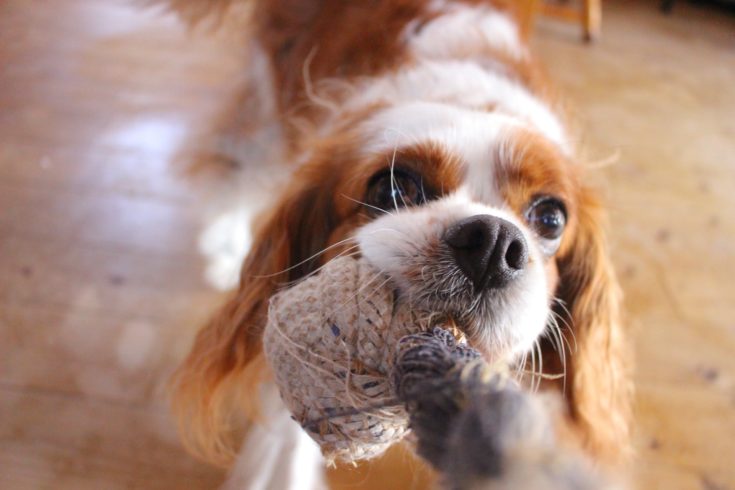
8. Keep it Consistent—Don’t Rush
Your Cavalier King Charles Spaniel is happily eating and playing in the crate with the door closed for short periods; however, this doesn’t mean they’re fully crate trained. Consistency with the door and praise will be the difference between success and problems, so keep it simple and slowly extend the time the door closes after your puppy is finished eating.
If you close the door and walk away, there’s a good chance your Cavalier will become distressed and try to get out of the crate, which can undo all your hard work.
9. Start Small
Now that the door is closed on your Cavalier King Charles Spaniel for short periods, you can start introducing the crate at different times of the day outside of mealtimes. Some Cavaliers may even go inside the crate by themselves to sniff out treats at this point, but keep the door open to allow them to go in and out freely.
Once this is established, the waiting game begins; the next step can take several weeks to master but will culminate in your Cavalier King Charles being crate trained, so try to be patient.
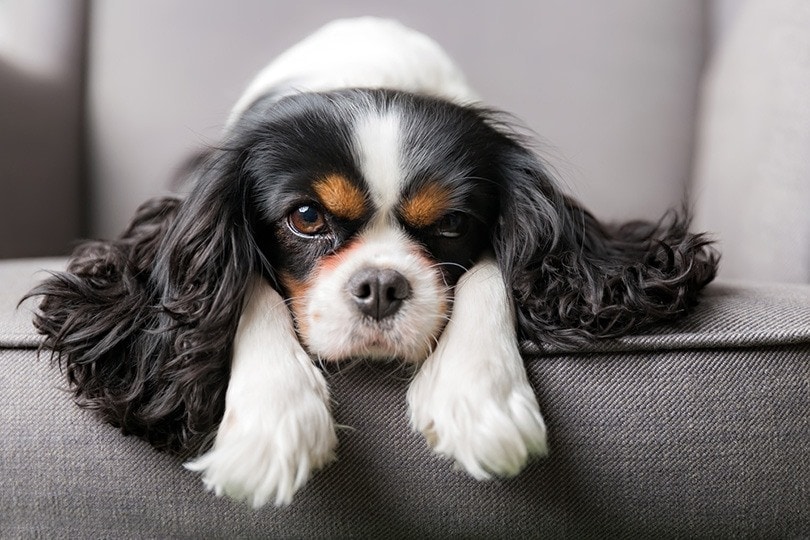
10. Being Patient — Closing the Door
The next part of crate training your Cavalier King Charles Spaniel is to close the door and leave the room for longer and longer periods. This is so your Cavalier gets used to the door being shut. Slowly increase the time the door is closed (in 10-minute increments, for example) and leave the room, listening for any signs of distress.
Your Cavalier King Charles Spaniel may cry at first but persevere and shower them with praise and treats while they’re still in the crate. Eventually, your Cavalier will use the crate as they please, and they won’t worry about being closed in on occasions, such as for periods during the evening or night.
11. Never Use the Crate as Punishment
The number one tip to remember when crate training your Cavalier King Charles Spaniel (or any dog, for that matter) is never to use the crate as punishment. Banishing your dog to their crate when they misbehave is a surefire way to ensure they’ll hate being there, as they’ll associate their crate with being told off when it should be their safe space.
Shouting, forcefully putting them in the crate, and keeping the door locked when they’re very distressed can all take you several steps back in your crate training, even negating it entirely. Instead, make sure that the crate belongs to your dog at the end of training and that it’s always a positive, safe, and calm place to be.
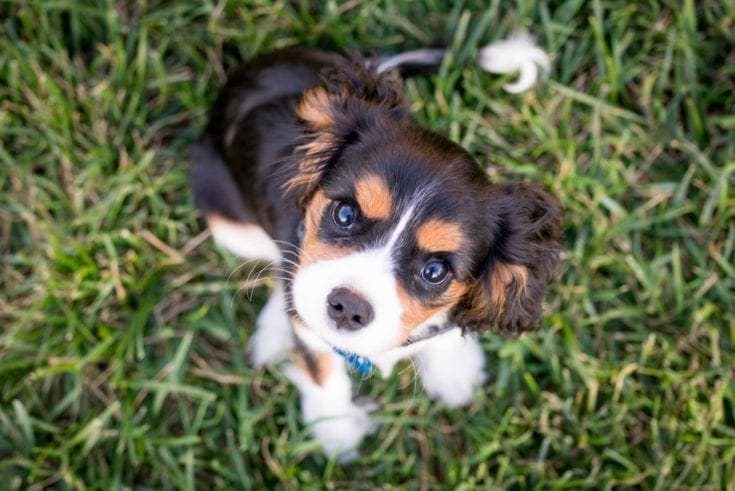
Safety Tip: Never Keep Any Accessories or Clothing on Your Cavalier King Charles Spaniel When They Are in the Crate
Ensure that you remove collars, harnesses, or any clothing from your Cavalier when they’re in their crate, as keeping anything on your dog when they’re crated (especially unsupervised) can lead to accidents such as them getting caught on bars, etc. If the collar gets caught and your dog panics, it can result in strangulation.
If they really must keep a collar on, safety collars that will snap open if pulled are the only kind that should be used, as they’re designed to stop strangulation from occurring.
Are Some Dogs Impossible to Crate Train?
Some dogs take more time to crate train than others. Dogs that already have a negative association with a crate, such as dogs who’ve been kept crated for a long time or created as a punishment, will likely be afraid of their crate and won’t want to go into it willingly.
Separation anxiety can also be a reason for a dog’s reluctance to be crate trained. However, these behaviors don’t spell the end of training. Going at your dog’s pace and establishing a positive connection between the crate and your dog is the key to successful training, as gentleness, praise, and a positive reason to go exploring in their crate can win around even the most stubborn of Cavaliers.
Are Crates Cruel?
There are some institutions that insist that all crate training and crates are cruel. However, dogs that are free to explore their crates use them just like a dog bed with extra space; the crate is their own “room” in the home. When the crates are utilized in this way, they’re not instruments of cruelty.
That said, there are reports of cruelty in which dogs are kept in containers for most of their lives, sometimes spending up to 16 hours inside a crate a day. The only time anyone should crate a dog for any significant amount of time is if they’re under the supervision of a vet and have been put on “crate rest” (or bed rest) to heal a broken bone or to heal after certain surgeries (such as cruciate ligament repair). Even in these circumstances, however, dogs are lifted out of the crates and interacted with all the time; they are never left alone.
Conclusion
There are some simple (yet necessary) steps to take when crate training your Cavalier King Charles Spaniel to ensure success. Taking your time, going with your dog’s schedule, and always looking out for signs of nervousness or distress is paramount to ensuring your Cavalier learns to enjoy their crate. Be sure to take your time with the training and always use lots of positive reinforcement, and your Cavalier King Charles Spaniel will happily snooze away in their comfortable crate in no time.
Featured Image Credit: Nigel Wiggins, Shutterstock



